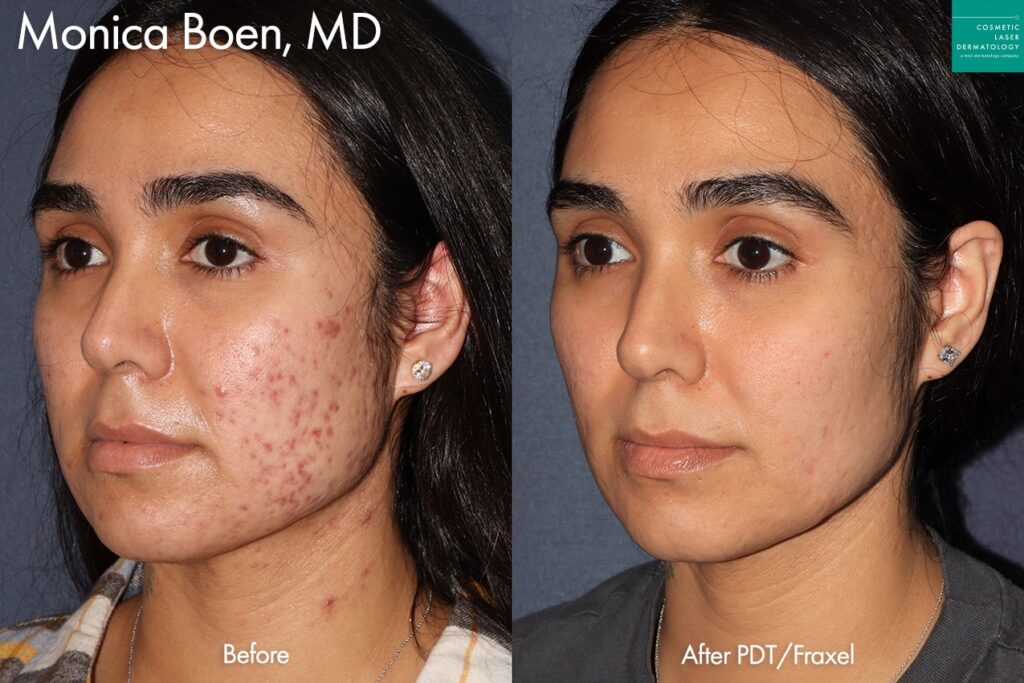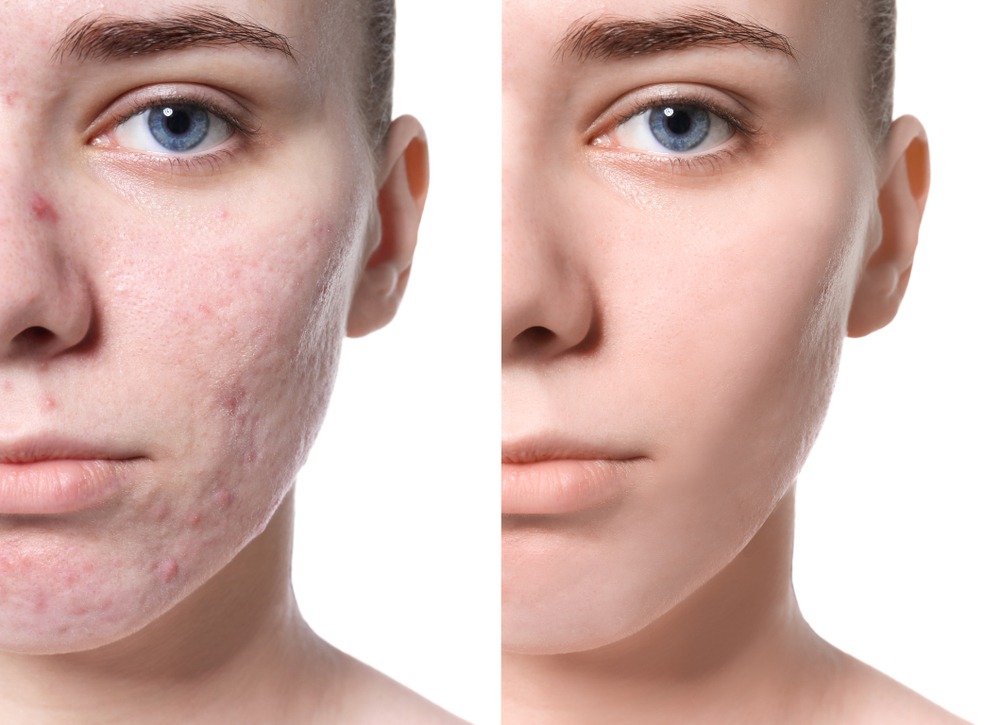Understanding the Various Skin Disease and Reliable Therapy Alternatives for Acne Scars
Acne scars represent a complex interplay of skin conditions that considerably influence people' self-worth and total skin wellness. Comprehending the unique kinds of acne marks-- hypertrophic and atrophic-- alongside their underlying causes, is pivotal for figuring out effective therapy techniques. Numerous therapeutic choices exist, ranging from innovative skin-related procedures to all-natural solutions. Nonetheless, the efficacy of these therapies commonly pivots on individualized analyses by certified experts. As we explore the landscape of acne mark management, it comes to be noticeable that the journey toward clearer skin might involve even more than simply topical services.
Sorts Of Acne Scars

On the other hand, hypertrophic marks arise from an overflow of collagen throughout the recovery process, leading to raised locations on the skin. These scars are typically solid and can differ in shade, sometimes appearing red or darker than the surrounding skin.
Recognizing these kinds of acne marks is important for developing an effective therapy strategy - acne scars. Options might include chemical peels, laser treatment, microneedling, or dermal fillers, customized to the specific mark type. A comprehensive examination with a dermatologist can aid determine one of the most ideal treatment, thinking about the individual's skin type, scar severity, and total skin health
Causes of Acne Scarring
Scarring takes place as an outcome of the body's natural recovery reaction to inflammation and injury triggered by acne sores. When acne types, it sets off an inflammatory action, causing the release of numerous cytokines and development variables that promote recovery. This process can sometimes lead to too much tissue development or insufficient repair service, resulting in scars.
The key reasons of acne scarring consist of the severity of the acne itself, period of the lesions, and private skin kinds. Extreme inflammatory acne, such as cysts and blemishes, is more probable to lead to scarring as a result of deeper tissue damage. Additionally, improper handling of acne lesions, such as choosing or squeezing, can intensify tissue injury and inflammation, enhancing the chance of scarring.
Hereditary predisposition also plays a substantial function; people with a family background of scarring are at a higher risk. Furthermore, skin kind and color can affect scar development, as darker skin tones may experience post-inflammatory hyperpigmentation, while lighter skin might create atrophic marks.
Eventually, recognizing these reasons is essential in handling acne and alleviating the possibility for scarring.

Therapy Alternatives for Scarring
Reliable therapy alternatives for acne scarring differ depending on the kind and severity of the marks. Normally categorized right into atrophic, hypertrophic, and keloid marks, these conditions need customized approaches for optimum outcomes.
For atrophic scars, which are defined by a loss of cells, treatments such as chemical peels, microdermabrasion, and laser therapy are typically employed. These approaches promote skin revival and boost collagen manufacturing, consequently enhancing skin structure. Subcision, a minimally intrusive treatment, can likewise be reliable by separating fibrous bands beneath the skin.
Hypertrophic and keloid marks can be much more testing to treat. why not try this out Alternatives consist of corticosteroid shots to decrease inflammation and squash the marks. In some situations, cryotherapy or laser treatment might be recommended to decrease their appearance.
Surgical alternatives are available for severe scarring, where excision or skin grafting may be needed. It's essential for people to speak with a skin specialist to evaluate their particular scar type and talk about the most ideal treatment plan. Combining several therapies often produces the ideal results, making sure that each individual's special skin problem is attended to successfully.
Natural Remedy and Natural Solutions
Natural remedies and home treatments can provide an accessible approach for people looking for to improve the look of acne marks (acne treatment for sensitive skin). Numerous components found in the home kitchen area have actually shown potential benefits in improving skin appearance and promoting recovery

Another reliable choice is lemon juice, which acts as an all-natural exfoliant and can lighten hyperpigmentation. Nonetheless, it should be used very carefully, as it might cause photosensitivity. Oat meal masks are additionally useful; their mild peeling can aid get rid of dead skin cells while calming inflammation.
Crucial oils, such as tea tree oil and lavender oil, can better sustain mark healing as a result of their antimicrobial properties. It is essential to carry out a spot test prior to using any kind of treatment to make sure there are no negative reactions. These natural remedies can be a complementary method in the trip to reduce acne scars.
Protecting Against Future Scarring
Adopting a positive technique to skincare can considerably decrease the threat of establishing future acne marks. Normal cleansing, peeling, and hydration can aid keep skin wellness and prevent stopped up pores.
Additionally, staying clear of the temptation to squeeze or pick acne sores is vital, as this can result in swelling and succeeding scarring. Rather, individuals must focus on applying topical treatments that promote recovery and minimize inflammation. Ingredients such as salicylic acid, benzoyl peroxide, and retinoids are understood for their efficiency in taking care of acne and decreasing scars.
Sunlight security is another important part; exposure to UV rays can dim marks and hinder recovery. go right here As a result, utilizing a broad-spectrum sunscreen daily can alleviate these results - acne scars.
Lastly, maintaining a healthy diet regimen abundant in anti-oxidants and remaining hydrated supports skin regeneration. By executing these preventative procedures, people can substantially reduce their danger of future scarring and promote total skin health.
Final Thought
Finally, an extensive understanding of acne marks, including both hypertrophic and atrophic types, is necessary for effective therapy approaches. Customized interventions, including professional treatments and natural home remedy, can considerably improve skin look and appearance. Safety nets also play a critical role in minimizing future scarring. Appointment with a skin doctor remains crucial to design personalized strategies that consider private skin types and scar intensity, eventually enhancing the efficiency of mark monitoring methods.
Acne scars represent a complex interaction of skin conditions that significantly influence people' self-worth and overall skin health. The two key classifications of acne marks are atrophic and hypertrophic marks. These scars are more identified into three subtypes: ice choice scars, which are narrow and deep; boxcar scars, which are broader and have distinct edges; and rolling scars, which develop a wave-like appearance due to uneven skin appearance.
An extensive assessment visit this page with a skin specialist can help determine the most appropriate intervention, taking right into account the individual's skin kind, scar severity, and overall skin wellness.
Assessment with a dermatologist remains essential to design tailored strategies that think about specific skin types and scar extent, inevitably enhancing the efficacy of mark administration methods.